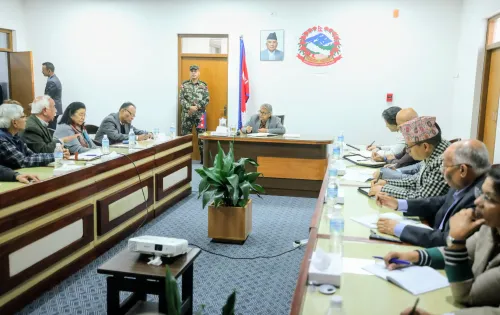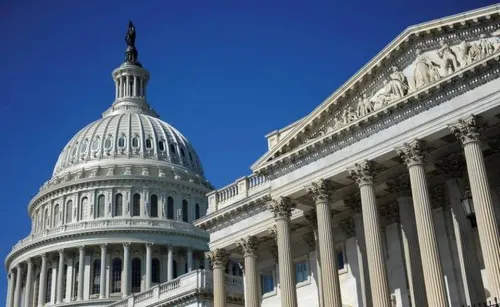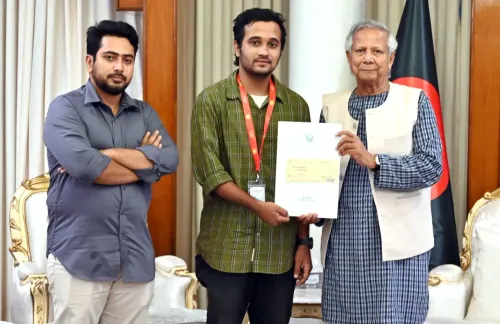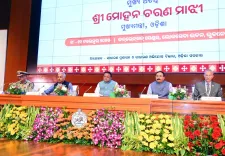What are the Key Details of the Ceasefire Agreement Between Thailand and Cambodia?
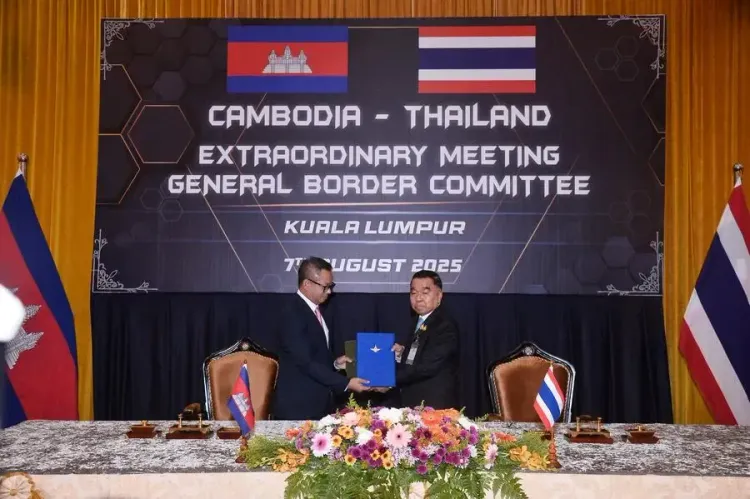
Synopsis
Key Takeaways
- Cambodia and Thailand have reached a ceasefire agreement.
- Both sides pledged not to escalate military forces along the border.
- International observers will monitor compliance.
- Ongoing communication between military units is established.
- This meeting marks a significant step towards regional peace.
Kuala Lumpur, Aug 7 (NationPress) Cambodia and Thailand have successfully come to an agreement regarding a ceasefire and formalized it during an extraordinary session of the General Border Committee (GBC) held on Thursday.
Delegates from both nations attended the meeting, with representatives from the United States, China, and Malaysia acting as third-party observers.
A joint statement released after the discussions at the Malaysian Ministry of Defence revealed that both parties agreed on a ceasefire encompassing all weapon types, committing to refrain from unprovoked firing towards each other's positions or troops, and pledging not to escalate military presence along the border.
Both nations agreed to keep the existing troop levels unchanged, as they were at the moment the ceasefire was established at midnight on July 28. They also promised to ensure proper treatment of any captured soldiers in line with international humanitarian law.
The statement emphasized that both sides showed support for an ASEAN observer team led by Malaysia to oversee adherence to the ceasefire. In the meantime, a temporary observation mission comprising defense attaches from ASEAN nations will be deployed in Cambodia and Thailand, as reported by Xinhua news agency.
Additionally, both countries agreed to maintain ongoing communication among all military areas and units, organize a Regional Border Committee meeting within two weeks, plan the next GBC meeting within a month, and, if necessary, call for an extraordinary GBC meeting immediately.
During a briefing after the talks, Thai Acting Defence Minister Nattaphon Narkphanit remarked that this meeting was vital for bilateral relations and regional stability, expressing hope that it would pave the way for long-term peace collaboration with Cambodia.
Cambodian Minister of National Defence Tea Seiha affirmed that Cambodia would fully implement the consensus reached and continue to foster close coordination and cooperation, showcasing Cambodia's constructive approach to regional peace.
Meanwhile, Malaysian Home Minister Saifuddin emphasized that both nations adhered to principles established within the ASEAN framework.
"In ASEAN, we resolve disputes through consensus, non-confrontation, trust, mutual respect, and non-interference. We bolster our regional unity, and this ASEAN spirit has guided us today and will continue to guide us forward," he stated.
Confrontations between Cambodian and Thai forces erupted on July 24 along their shared border. The two countries agreed to a ceasefire on the afternoon of July 28, which took effect at midnight that same day.

